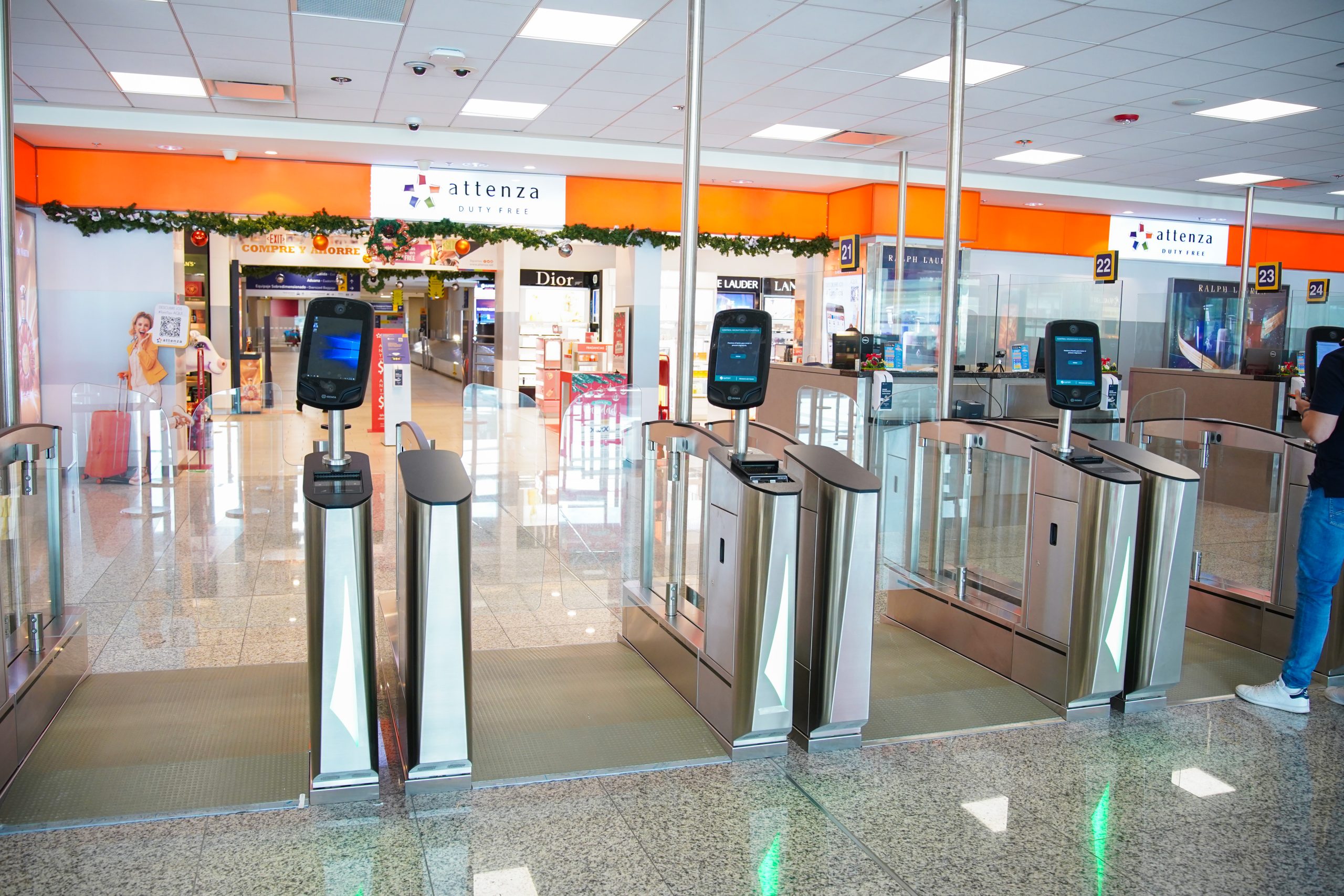Quito Airport, pioneer in the automation of airport processes that improve the passenger experience

The Mariscal Sucre International Airport becomes the first airport in Ecuador to implement automated solutions in airport processes. The project incorporates biometric systems for immigration control in international arrivals and boarding on Delta airline flights to the United States. It also includes automatic doors for access to security filters. This initiative is part of a technological transformation project at the Quito airport, aimed at enhancing efficiency, security and traveler experience.
Biometric doors in immigration arrival control.
Passengers with an Ecuadorian biometric passport (with chip) and who are over 18 years old can now use one of the 5 biometric doors that have been installed to carry out this process in a personal and automated way, which reduces service times from 1 minute 30 seconds to 45 seconds per person.
How does it work?
If eligible, passengers must approach to the biometric gate, scan their boarding pass and passport on the scanning screen, wait for data confirmation, and position for facial recognition. If everything is in order, the doors will open automatically, allowing the passenger to continue through the airport.
Since this implementation began in the testing phase on August 14, more than 11,000 passengers have taken advantage of these biometric doors, significantly improving waiting times.
Biometric doors for boarding on Delta flights to the United States
Two biometric gates, located in pre-boarding A10 and A12 gates, have transformed the boarding process for direct flights to the United States. This innovative system, initially operational only for Delta flights, uses advanced facial recognition technology that connects with the airline’s screening systems and links directly to the United States Customs and Border Protection. In this way, passengers only have to stand in front of the screen and, once facial recognition and data verification have been carried out, the door opens automatically to board the plane.
How does it work?
At boarding time, passengers approach to the biometric gate without assistance, avoiding the traditional scanning of the boarding pass and passport. Within seconds, facial recognition is complete, and the system instantly integrates with the airline and CBP system to verify passenger information. With successful verification and if there are no impediments, the door opens for the passenger to access the plane.
Access doors to the security filter area
The installation of automatic doors for access to security filters allows instant verification of the passenger’s boarding pass to speed up the process and go directly to the filters.
Ramón Miró, president and CEO of Quiport, the concessionaire company of the Quito airport, mentioned: “The implementation of biometric gates at the Quito airport is an innovation that automates three essential airport processes. “We are proud to be pioneers in the adoption of this cutting-edge technology in Ecuador, which reinforces our commitment of providing an excellent experience to our passengers.”
